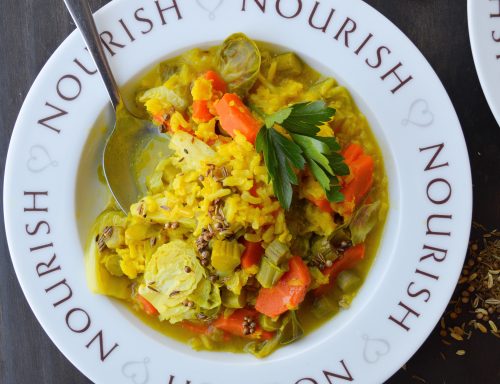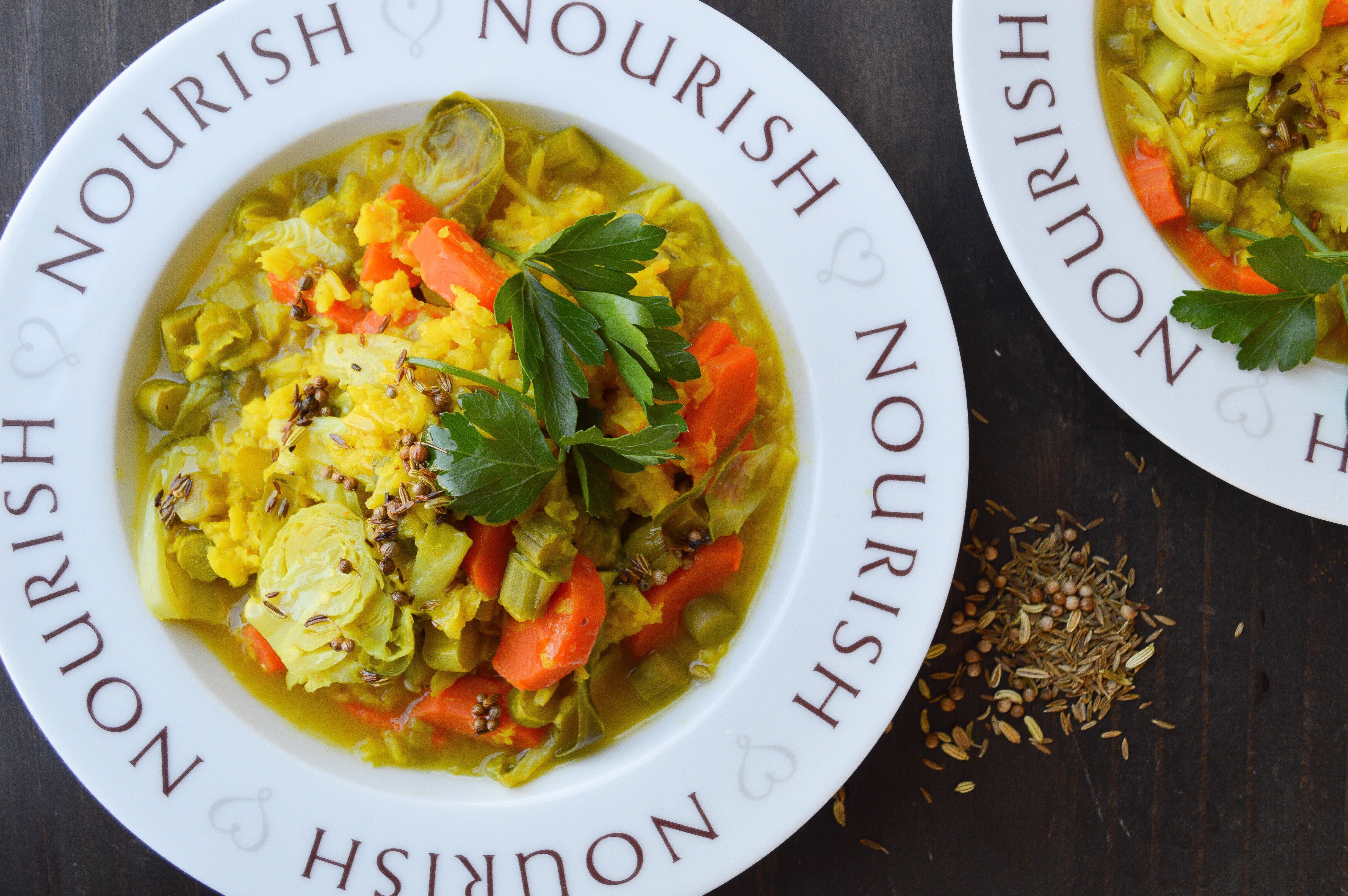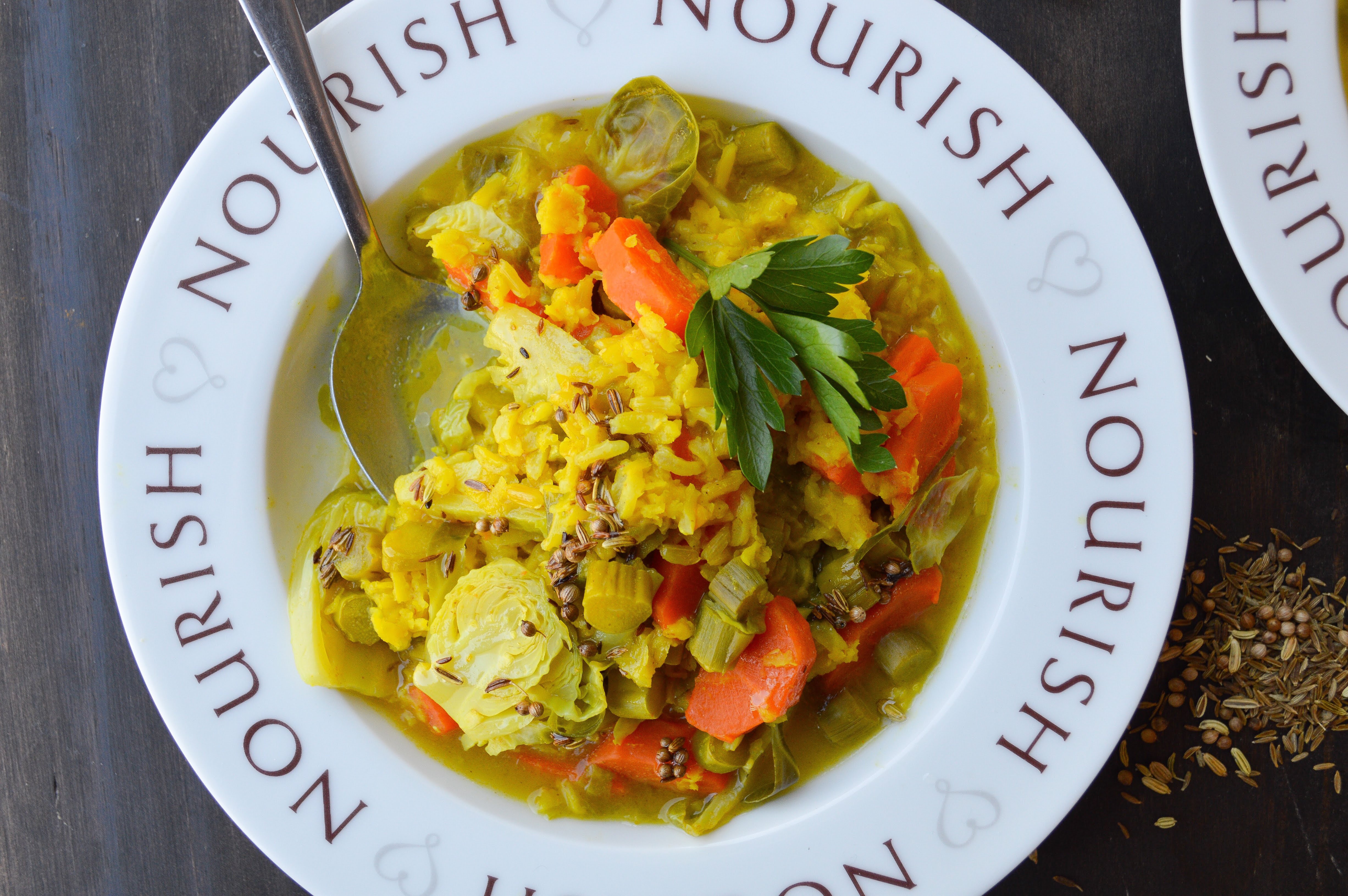Spring is the perfect time to tune into what we put on our plates and in our bodies. Every seasonal change holds a reminder to adjust and adapt our diets to our current environment. With this in mind, our friend and employee, Tina DeJesus, sought to share a dish that is helping her with these changes. Tina is a professional chef, aka the Veg Head Chef, and is enhancing her knowledge of plant-based eating with Ayurvedic principles. Keep reading to find out more about her, why she likes this nutrition approach, and for her staple Kitchari recipe!
About the Chef
What’s your background/who are you?
I am Tina DeJesus a personal chef who specializes in plant-based meals. I graduated form Le Cordon Bleu with a degree in culinary arts. I spent 10 years working in restaurants living an unhealthy lifestyle of late-night partying followed by sleeping all day and repeating the same cycle. I decided to change my way of living in 2013, where I dove into all thing’s vegetarian, nutrition, mental health, and yoga. Which lead me to VegHead Chef where I now create plant-based meals that are nutritious and simple! For the past six years I have been working as a private chef in the Hamptons, hosting yoga retreats and teaching cooking classes.
What’s your view on how we should eat?
I believe we should be eating a whole food plant-based diet. To me that means preparing simple
meals from whole fruits, vegetables, grains, and if needed small amounts of organic/wild caught/grass-fed animal proteins. I also think it is important to eat organic and with the seasons.
What is Ayurveda and why did you start to get into it?
Simply put, Ayurveda is an ancient 5,000-year-old medical system of health and wellbeing. It is based on the belief that you can achieve optimal health through the balance of the mind, body, and spirit. It is the sister science to yoga. I started to get into Ayurveda because after many attempts to study nutrition I could not retain the information behind it. This is the first system of science that makes sense to me. It is based on the natural elements of the earth: fire, water, earth, air, and ether (space). Ayurveda follows nature and nature I understand.
What’ the importance of Kitchari?
Kitchari is a staple dish in Ayurveda- it’s simple to prepare and full of flavor. To me this dish is a one pot meal that is genius!
Is this something we can eat all the time or occasionally?
This is an all the time meal. You can switch it up to follow what vegetables are in season-
making it any every changing recipe. It’s the perfect pick me up meal if you are out of balance i.e. the
seasons change, and your allergies are acting up eat a bowl of kitchari and you immediately feel better.
What’s your favorite vegetable?
It changes from time to time, but I will always love broccoli.
Spring Kitchari
This dish, as Tina said, is completely versatile and adaptable for your own preferences. She kept things simple, but definitely did not skimp out on flavor or nutrients. Lets us know if you try this out on social media, and to find out more about Tina, check her out @thevegheadchef or on her website!
Serves: 2-4
Prep time: 20 minutes Cook Time: 45-50 minutes
Ingredients:
- 2 ½ cups water
- ½ basmati brown rice
- ¼ cup yellow split mung dal, soaked for at least 1 hour
- 1 ½ tsp spice mix (equal parts ground coriander, cumin, fennel and turmeric powder)
- ½ cup carrots, small diced
- ¼ cup brussel sprouts, shredded
- ¼ cup asparagus, sliced thin
- Salt, to taste
- Fresh cilantro leaves, to garnish
- Tempering:
1 tablespoon coconut oil
1 pinch of cumin seeds
1 pinch of coriander seed
Procedure:
1. Rinse brown rice and mung dal until water run clears. About 5 minutes
2. In a large pot bring water to a boil
3. Once water is boiling add brown rice, mung dal and carrots
4. Bring to a boil then right away lower to a simmer
5. Simmer for 20minutes then add Brussel sprouts and asparagus. Make sure everything is
submerged in water- if not add a half of cup of water at a time to cover. Cook for another 25
minutes or until all vegetables are tender.
6. MAKE TEMPERING: In a small sauté pan add coconut oil over medium/high heat. Add cumin
seeds and coriander. Continuously swirl around the pan to toast until seeds pop and slightly
darken.
7. Portion out Kitchari and finish with tempering and fresh cliantro leaves; enjoy!





